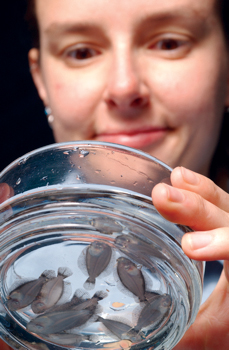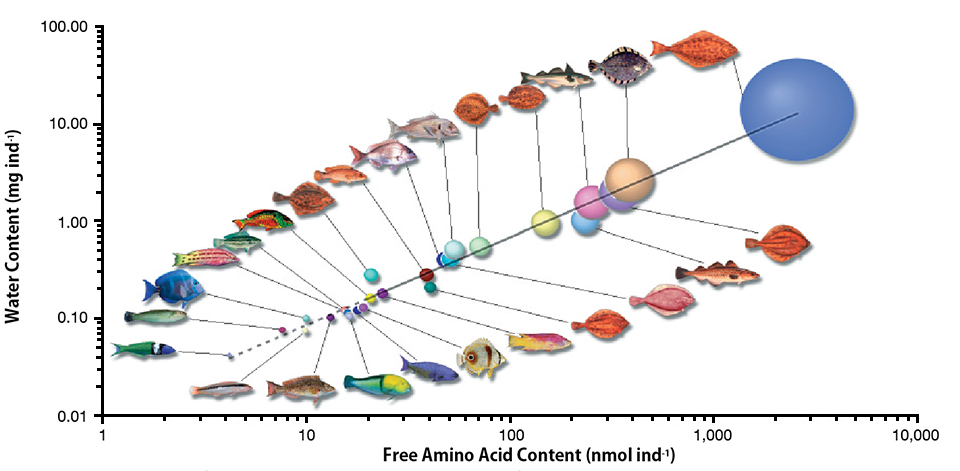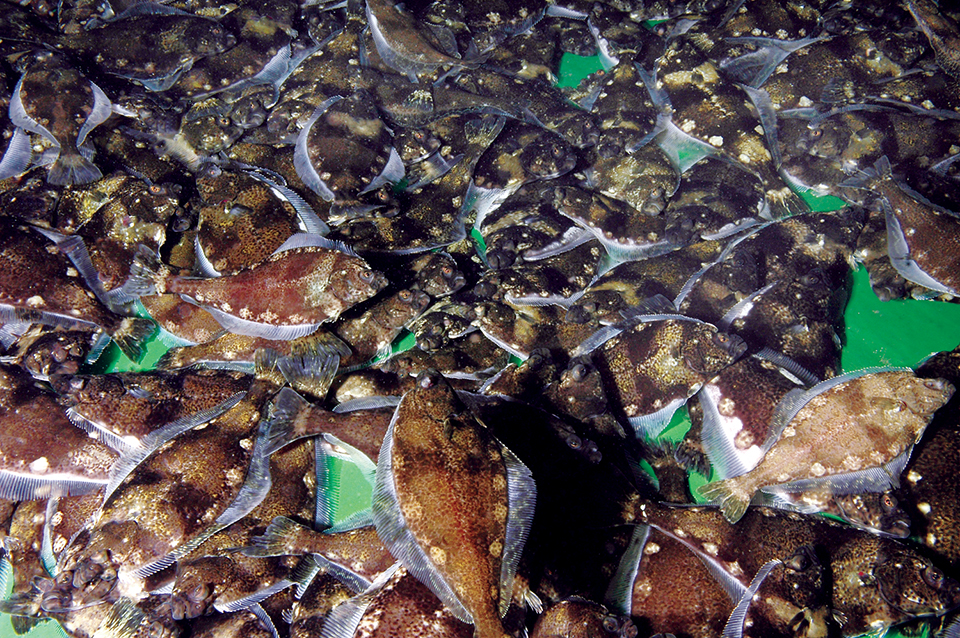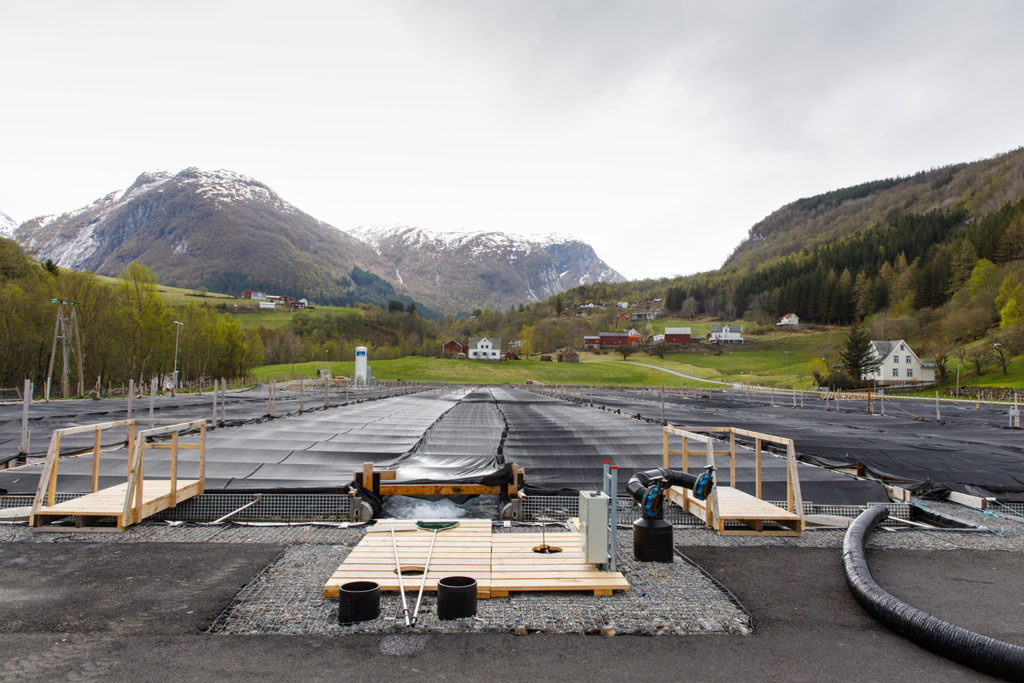Beneficial effects of microalgae during larviculture include fivefold increase in survival

The California halibut (Paralichthys californicus), an endemic species along the California coast of the United States, is an important sport fish with potential for culture in aquaculture systems.
Small-scale production of California halibut juveniles was originally realized in a clearwater flow-through system at the California Halibut Hatchery Program in Redondo Beach. The systems used conical-bottom tanks for the pelagic phase and shallow raceways for the benthic period thereafter.
A larger recirculation system was developed at the University of California in Davis, where larger numbers of juveniles have been produced. However, the larval growth and survival in both systems was too limited to be applied to large-scale production.
Microalgae improves performance
Numerous studies have shown that the addition of microalgae to tanks during early rearing can improve larval performance for a number of species. The authors recently investigated the potential benefits of green water larviculture for California halibut using both live algae and algae paste. The study was funded by the National Sea Grant College Program of the U.S. Department of Commerce National Oceanic and Atmospheric Administration and the California State Resource Agency.
California study
A batch of California halibut eggs was collected at the California Halibut Hatchery Program facility. The newly hatched larvae were transported to the University of California in Davis and divided into three groups.
The first group was raised in clea water in two 180-liter cylindrical tanks of 0.8 meters diameter and 1.1 meters maximum depth with conical bottoms connected to a recirculation system. The second group was reared in two static 120-liter cylindrical tanks of 0.5 meters diameter and 0.6 meters maximum depth. Additions of Isochrysis algae paste were made twice a day to maintain the algae concentration between 800,000 and 1 million cells per milligram.
The third group was cultured in 100-liter static raceways that measured 2.2 meters long, 0.35 meters wide, and 0.15 meters deep. Live Isochrysis were used to maintain the green water environment.
For all groups, water quality parameters were kept as follows: temperature – 21.0 ± 0.5 degrees-C, dissolved oxygen – 7.7 ± 1.0 milligrams per liter, salinity: 30.5 ± 1.0 grams per liter, and photoperiod – 16 hours light and eight hours dark. Starting at mouth opening three days posthatch, the larvae were given rotifers fed baker’s yeast and enriched with a rotifer grow-out diet. During the 15 to 40 days after hatching, the fish were fed enriched artemia nauplii and meta-nauplii.
Twenty larvae were sampled at regular intervals in each treatment for total length measurement. Survival was evaluated by counting at 28 and 38 days posthatch for the clear- and green water tanks, respectively.
Positive results
Fish survival was significantly affected by the presence of the microalgae. Both treatments with microalgae had a better survival rate than the clear water treatment (Table 1). Larvae growth was also positively affected by the algae.
Muguet, Larval halibut growth and survival, Table 1
| Live Algae | Algae Paste | Clearwater | |
|---|---|---|---|
| Total length at 17 days posthatch (mm) | 5.90 | 5.80 | 5.60 |
| Total length at 35 days posthatch (mm) | 8.20 | 7.90 | 6.80 |
| Survival at 38 days posthatch (%) | 54.55 | 52.65 | 7.70 |
Increase in size was similar for all treatments during the premetamorphic period. However, 35 days posthatch, the larvae raised in green water were larger. Growth was similar for fish raised on algae paste or live algae.
Other parameters were also influenced by the use of algae. The number of unpigmented juveniles was reduced dramatically, and subsequent weaning onto artificial diets was more successful in the green water fish, probably due to their larger size.
Algae use recommended
The beneficial effects of microalgae during larviculture have been reported for numerous fish. The fivefold increase in survival reported in this research, for example, was consistent with similar experiments carried out with different marine species. Multiple factors are thought to improve larval quality: better localization of the live prey, stabilization or improvement of the water quality, direct or indirect nutritional effects, and increased pancreatic and intestinal enzymatic production.
The use of dead but intact microalgae in the algal paste did not affect the results relative to the use of live algae, even though no beneficial effects on water quality could be attributed to the algal paste. This contrasted with the live algae, which should contribute to improved water quality. Given the improved survival and weaning, green water culture of California halibut larvae using live algae or algae paste is strongly recommended.
(Editor’s Note: This article was originally published in the April 2005 print edition of the Global Aquaculture Advocate.)
Now that you've reached the end of the article ...
… please consider supporting GSA’s mission to advance responsible seafood practices through education, advocacy and third-party assurances. The Advocate aims to document the evolution of responsible seafood practices and share the expansive knowledge of our vast network of contributors.
By becoming a Global Seafood Alliance member, you’re ensuring that all of the pre-competitive work we do through member benefits, resources and events can continue. Individual membership costs just $50 a year.
Not a GSA member? Join us.
Authors
-
Jean-Benoit Muguet
Department of Animal Science
University of California
One Shields Avenue
Davis, California 95616 USA[117,100,101,46,115,105,118,97,100,99,117,64,116,101,117,103,117,109,97,106]
-
Douglas E. Bush
Department of Animal Science
University of California
One Shields Avenue
Davis, California 95616 USA -
Douglas E. Conklin, Ph.D.
Department of Animal Science
University of California
One Shields Avenue
Davis, California 95616 USA -
Raul H. Piedrahita, Ph.D.
Department of Biological and Agricultural Engineering
University of California
Davis, California, USA -
German E. Merino, Ph.D.
Departamento de Acuicultura
Universidad Catolica del Norte
Coquimbo, Chile
Tagged With
Related Posts

Health & Welfare
Integrated larval-nursery system for California halibut
Hubbs-SeaWorld Research Institute developed an integrated larval-nursery recirculating aquaculture system for California halibut utilizing shallow raceways for juvenile culture.

Aquafeeds
Amino acid requirements in developing marine fish
Most marine fish have pelagic eggs with large pools of free amino acids of fairly constant proportion regardless of species. The amino acids provide energy for metabolism and are an important nutritional asset for growing embryos.

Intelligence
Halibut farming in Norway
While stable production of juveniles remains an issue for halibut farming in Norway, advances such as diets to replace live artemia are improving the industry.

Innovation & Investment
Norway showcases halibut farm as sustainability star
Recognizing its potential as a sustainable fish producer, Norway highlights land-based halibut farmer Sogn Aqua in the debute of The Explorer digital showroom. The Advocate recently paid a visit to the farm in Ortnevik.


